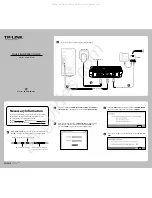
Bridge GUI Guide: Security Configuration
135
Role
,
Fortress-Password-Expired
) and administrators must be
configured on the server. Fortress Vendor-Specific Attributes
are provided in the
dictionary.fortress
configuration file
included on the Bridge software CD and are available for
download at
www.fortresstech.com/support/
. Consult your
external RADIUS server documentation for instructions on
configuring the service
You can configure the same authentication server for more
than one supported authentication type.
Even when no authentication server is configured for the
Bridge, you can set global session idle timeouts for connected
Secure Client and host devices connecting to the Bridge
(Section 4.4).
If you are using the Bridge’s internal RADIUS server, you can
set local default timeout settings for authenticating Secure
Client devices and users (Section 4.3.2) that will override the
RADIUS-server-independent Secure Client idle timeout
described above. Individual user and device timeout settings
override the local defaults (Section 4.3.3).
Figure 4.8. Simple View, external
RADIUS Server
frames, all platforms
The Bridge can use up to four authentication servers at a time,
although in Simple View you can configure only two. None is
configured by default (as indicated by the blank
IP Address
and
Shared Key
fields in Simple View and the empty
Server List
in
Advanced View).
More than one authentication server can be configured on the
Bridge for purposes of redundancy. For a given authentication
type, however, only the relevant server with the first priority will
be used to check authentication credentials. The success or
failure of a given authentication attempt is therefore determined
solely by the active authentication server for that authentication
type. That is, credentials are authenticated or failed by the
















































